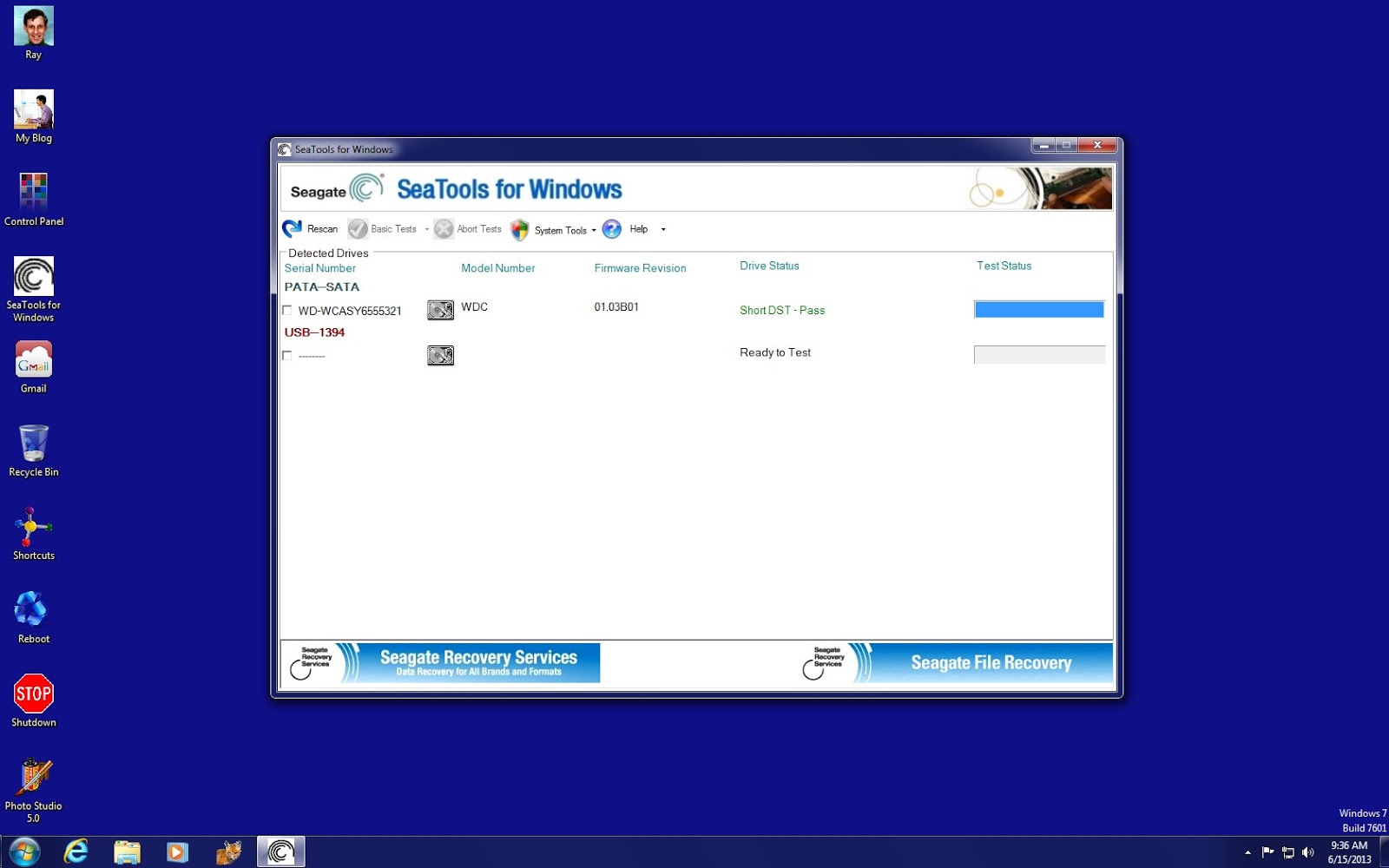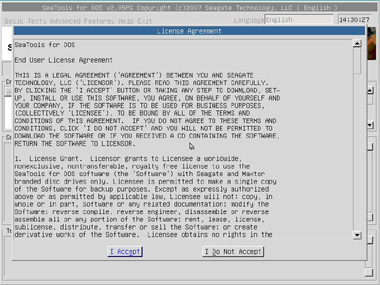
- #SEAGATE SEATOOLS SHORT DST HOW TO#
- #SEAGATE SEATOOLS SHORT DST SERIAL NUMBERS#
- #SEAGATE SEATOOLS SHORT DST SERIAL NUMBER#
- #SEAGATE SEATOOLS SHORT DST INSTALL#
- #SEAGATE SEATOOLS SHORT DST PORTABLE#
Similar to Short Drive Self-Test, the Short Generic test, crosschecks various areas of your external hard drive.
The Short Drive Self-Test is compatible for most Seagate Expansion 4TB Portable Drive problematic situations. Most of the drives run a clear and usual diagnostic procedure when you launch the DST.
Short Drive Self –Test is built into the hard drive’s firmware. Short Drive Self-Test (20 to 90 seconds long). Long Generic (May take several hours to complete). 
Meanwhile, choose more than one drive at a time to test themĬhoose from the below tests that you would like to perform so that the test is initiated immediately for Expansion 4TB Portable Disk Error checking. Identify that the Seagate, Samsung, LaCie and Maxtor Seagate expansion 4TB external hard drives models are provided a gold drive icon and the Non-Seagate drives will be assigned a silver drive icon.
The Seagate assigns numbers to the external unit as a bulk and these serial numbers do not relate to the numbers. The serial number and the model number of the external drive are frequently displayed for Windows SeaTools inside the external case. Seagate serial numbers are alphanumeric and eight characters long. The Seagate external hard drive’s model numbers start with the letters “ST”. The Model Number and Serial Number information of the drive are also displayed on this screen. Enable the check mark in the box next to the drive letter or information. The various storage devices on our system are displayed on your computer screen, once the SeaTools software is loaded. Most of the Portable and notebook systems consist of an SATA or PATA External drive. PATA (Parallel ATA or IDE), SATA (Serial ATA), SCSI, or SAS (Serial-Attached SCSI) are recognized as External drives. This is brought to your kind information that the seagate Expansion 4TB Portable External hard drives that are connected to the system through USB, 1394 FireWire or eSATA do not acquire the same background activity as the External drive. Identifying Sea Tools’ Drive for Expansion 4TB Portable Disk Error checking: The SeaTools tests possess much time to complete the diagnostic process. 
Hence ensure that the drive is not busy while using SeaTools software.
If the drive is busy, SeaTools will temporarily append its current progress. If the above step does not happen, then the Windows will proceed to give the external hard drive disk commands to access the data that are required by other applications. The closing of applications will allow the drive to maintain its focus on SeaTools. Before performing a hard disk diagnostic, close all the running applications on your computer. Click Seagate and choose SeaTools for Expansion 4TB Portable Disk Error checking Windows. Go to Windows Start button and click on Programs. It is easy to launch the SeaTools program if you already have a SeaTools icon on your Windows Portable, else follow the steps below. In order to use the SeaTools, it is important to download and install the SeaTools software on your Windows computer.After the SeaTools installation, launch it by following the steps below:
The steps below illustrates you on how to use SeaTools for Expansion 4TB Portable Disk Error checking – Windows. In order to test the Seagate, Maxtor-brand, and Samsung external hard drives on Windows, we recommend to use SeaTools and complete the process.
On the Run window, type chkdsk x:/f x is the letter assigned to the external hard drive that you wish to check. Choose Run and in the Run window type cmd and press the Enter key. For Windows XP, go to the Windows Start menu, and click on it.  Type cmd in the taskbar provided and press the Enter key. For Windows 7/Vista, go to the Start menu and look for Programs and Files using Windows Search option. For Windows 8 operating system, click the Windows key ( ) + X together on your keyboard, and then choose the Command Prompt (Admin). Please follow the command-line procedure to execute CHKDSK:
Type cmd in the taskbar provided and press the Enter key. For Windows 7/Vista, go to the Start menu and look for Programs and Files using Windows Search option. For Windows 8 operating system, click the Windows key ( ) + X together on your keyboard, and then choose the Command Prompt (Admin). Please follow the command-line procedure to execute CHKDSK:







 0 kommentar(er)
0 kommentar(er)
